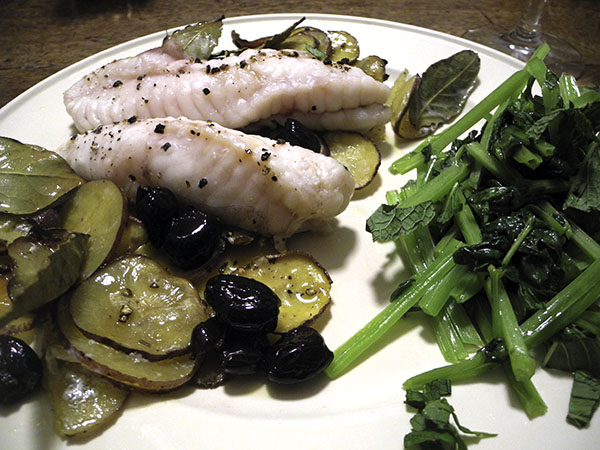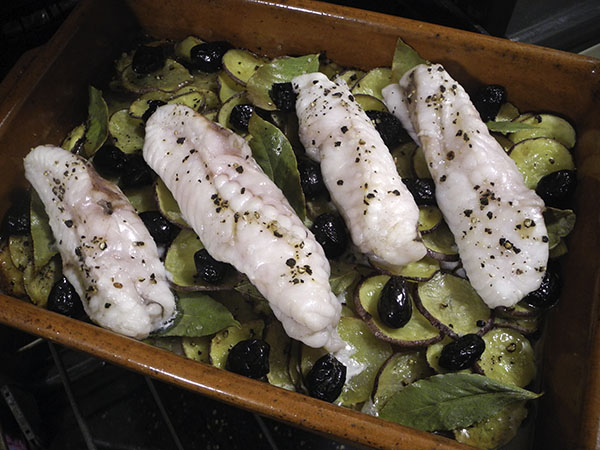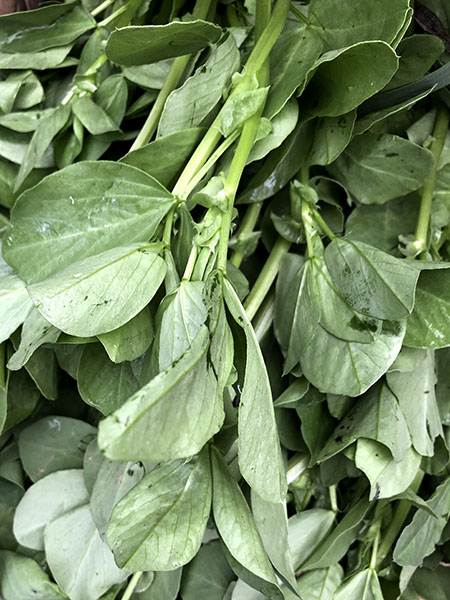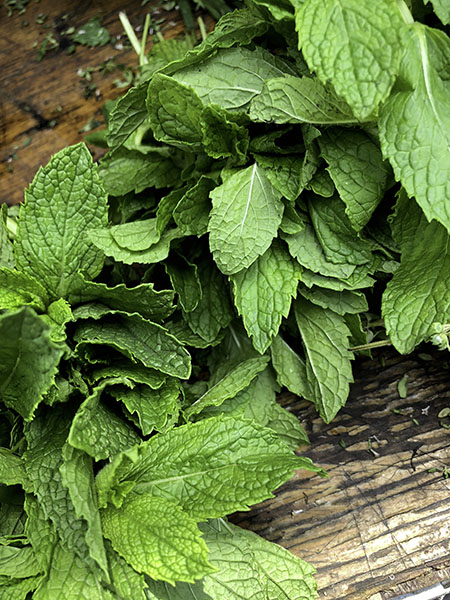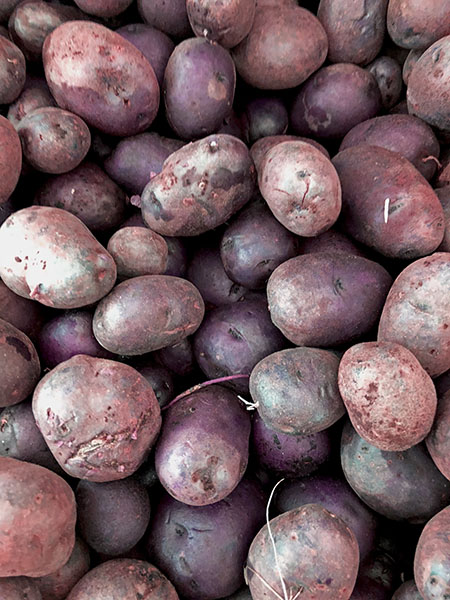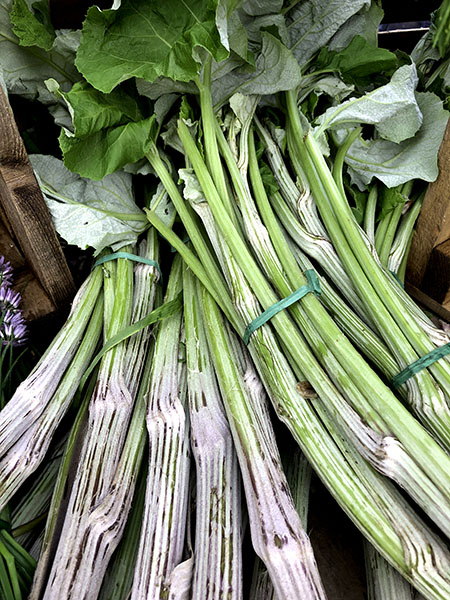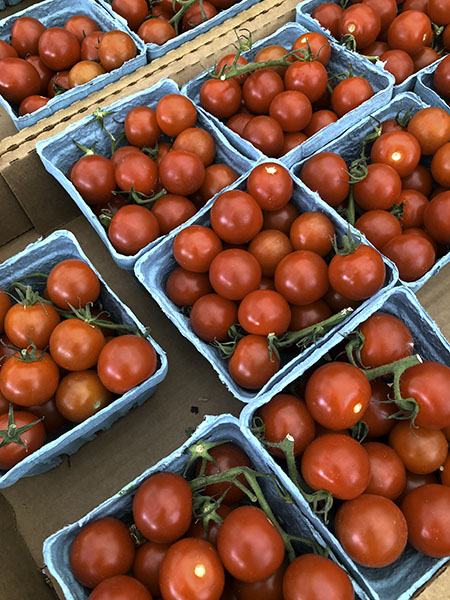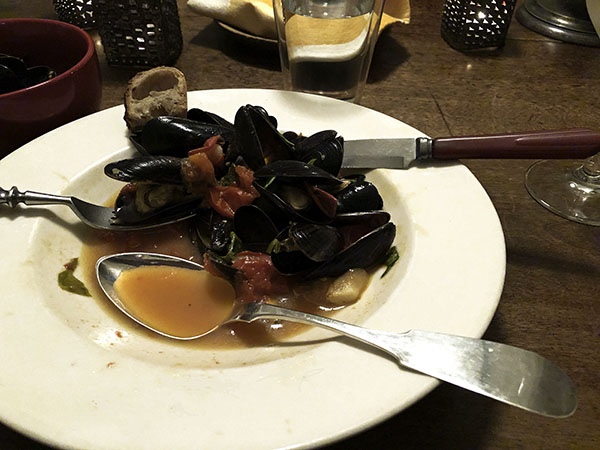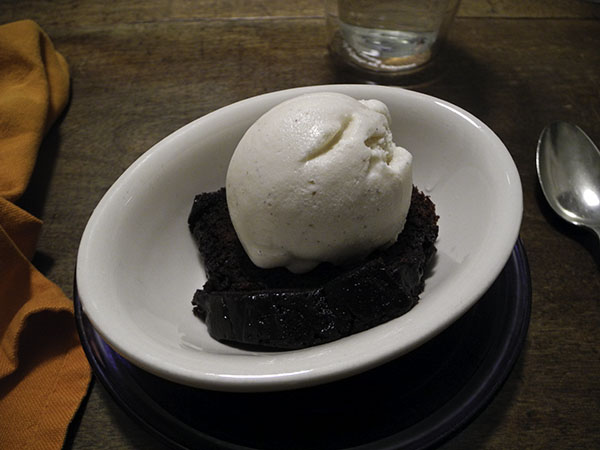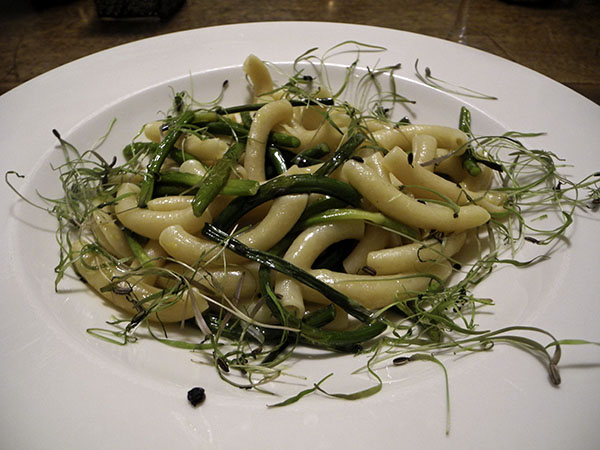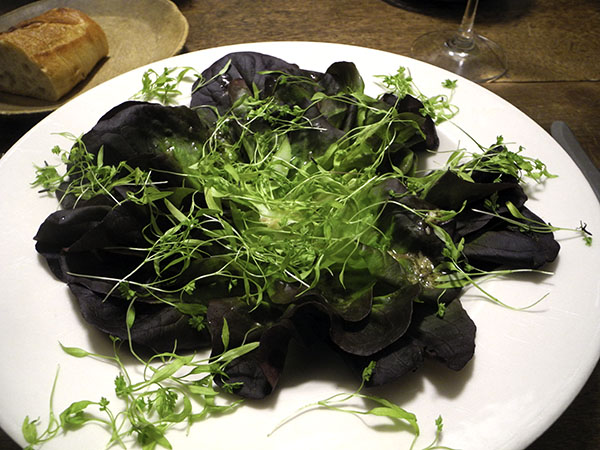
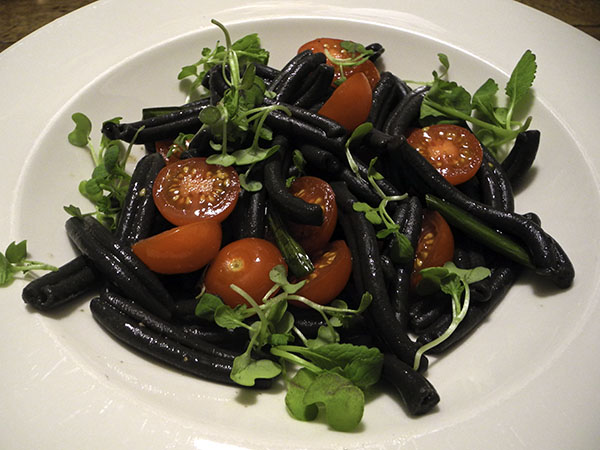
I only realized it was a pretty black meal once I started looking at these pictures, now some 10 days after it was prepared (we had left for Los Angeles the day after).
But it was also a pretty black meal, and that makes me smile, some 10 days after we enjoyed it.

- some gorgeous salanova red butter lettuce from Alewife Farm, dressed with a vinaigrette made by slowly whisking some Spanish (Seville) olive oil from Whole Foods Market in a small bowl with a mix of a very small amount of grated spring garlic from Berried Treasures Farm, a bit of good Dijon mustard, sea salt, freshly-ground black pepper, and a good Italian white wine vinegar, Aceto Cesare Bianco, (in a proportion of four parts oil to one part vinegar), sprinkled with some micro chervil from Two Guys from Woodbridge
- a demi-baguette from Whole Foods Market
The pasta course, with its gentle sweetness, was a good foil for the acidity of the salad that preceded it. It was also just about as simple to prepare as the salad, a virtue much welcomed by the cook, since we would be flying to the West Coast the next morning.
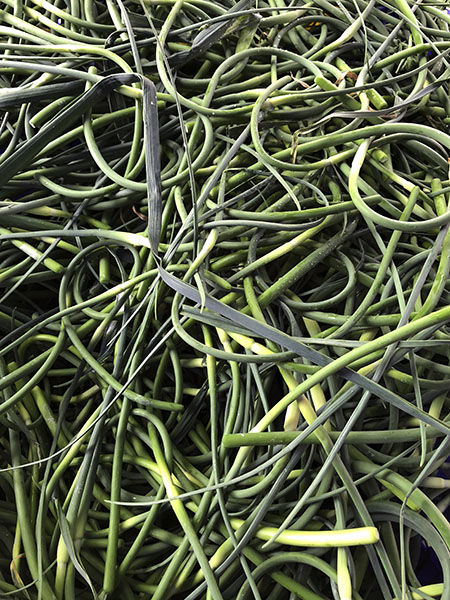
- four garlic scapes from Norwich Meadows Farm heated in a olive oil inside an antique, high-sided tin-lined copper pot until they had begun to soften, a bit of crushed dried pepperoncino Calabresi secchi from Buon Italia added, then some of ‘The Best Cherry Tomatoes’ from Stokes Farm, halved, and the contents stirred a little before half a pound of squid ink pasta (8 ounces of Severino squid ink strozzapreti from Whole Foods Market (a recent impulse purchase) that had just finished cooking al dente was added, the mix stirred again, along with some reserved pasta cooking water, until the liquids had emulsified, arranged inside 2 shallow bowls, some olive oil poured around the edges, and finished with a garnish of micro mustard from Windfall Farms
- the wine throughout was an Italian (Campania/Ischia) white, Casa d’Ambra Ischia Bianco 2016, from Garnet Wines
- the music throughout was the album, ‘Le Concert Spirituel au temps de Louis XV (1725-1774)’, Jordi Savall conducting Le Concert des Nations
